Jeff Bezos was the richest person in the world for a few years, until last year when he was unseated by Elon Musk. Don’t worry, he’s still got at least $170 billion. That’s enough to buy a few private islands or anything else you could want.
Bezos is an entrepreneur famous for creating Amazon.com, an online store that began with selling books, but now sells pretty much everything.
So how did Bezos and Amazon become so successful? That’s exactly what we’ll explore in this summary of The Everything Store, a book that tells the story of Jeff’s life and explosive growth of Amazon.
If you’re interested in entrepreneurship, leadership, and business, then this will be a fascinating read!
Who is Brad Stone?
Brad Stone (Wikipedia), author of The Everything Store, has written about technology for over 20 years, for companies like the New York Times, Newsweek, and Bloomberg. This book was based on more than 300 interviews Stone conducted with people closely involved with Amazon.
🚀 1. Conquering Outer Space: Bezos has always been motivated by a grand personal vision inspired by science fiction
Let’s speed through a few basic fact about Jeff Bezos’ childhood mentioned. These were mentioned in the early chapters of The Everything Store:
- Never knew his biological father. Bezos’ biological father was a professional unicyclist who didn’t make much money. His parents divorced very early and when he was 3 years old, his mother married Miguel Bezos. Miguel had escaped communist Cuba, graduated university in the US, and became a petroleum engineer for Exxon.
- Was a gifted young learner. When he was 8 years old, Jeff was enrolled in a program for gifted students that provided more open, flexible learning. In school, he began learning basic computer programming on his own. Also, he had several random jobs, including one summer at McDonald’s.
- Was highly competitive and hard-working. In high school, Jeff won many science and math awards, with many former classmates describing him as very intelligent and super competitive. One day he announced that he would be high school valedictorian, and studied like crazy the next few months to achieve it, winning the position over several hundred other students.
Growing up, Jeff Bezos was a huge fan of science fiction, especially Star Trek. He always had a dream of exploring space, a dream that energized his business ambitions.
In his high school valedictorian speech, he even dropped some quotes from Star Trek and talked about his dream of creating permanent human settlements in space. Coming out of the mouth of some random high school kids, those ideas must have sounded outrageous.
In 2005, after Amazon’s success, Bezos began secretly buying huge areas of land in Texas. There he launched his aerospace company Blue Origin, which now has its own spaceport and has received multiple grants from NASA. Jeff Bezos is spending $1 billion of his own money to fund the company, fulfilling a lifelong dream. Bezos’ high school girlfriend told reporters the biggest reason he had wanted to become wealthy was “to get to outer space.”
At the moment, the #1 wealthiest person in the world is Elon Musk, the founder of Tesla and SpaceX. In one way, Bezos and Musk are incredibly similar: they were both huge fans of science fiction. As a kid, Elon Musk read an insane amount of books, he was basically reading all day long according to relatives. And one thing he couldn’t get enough of was science fiction. His favourite books included classics from Isaac Asimov, Robert Heinlein, and Douglas Adams.
In retrospect, Musk’s obsession with fiction about the future makes sense. What else makes someone dream of making cars that drive themselves, rockets that land themselves, and a human colony on Mars? Something had to plant the seeds of those crazy ideas in his imagination. And he understands that many of his ideas seem crazy—My favourite quote from Elon Musk is “When something is important enough, you do it even if the odds are not in your favour.”
Learn more in our summary of Elon Musk’s biography by Ashlee Vance
Jeff Bezos grew up in a working-class family. He excelled in school because he was highly intelligent and competitive. He loved science fiction and dreamed of exploring outer space, which drove his lifelong ambition for wealth. In 2005, he founded the private aerospace company Blue Origin.
🌊 2. Catch the Wave: Keep your eyes open for technology trends that are new and growing fast
“Never chase the hot thing… you need to position yourself and wait for the wave.” —Jeff Bezos
In 1986, Jeff Bezos graduated from Princeton University with a degree in electrical engineering and computer science. We did mention this guy’s smart, right? Then he went to Wall Street, working at various small financial companies.
The last financial firm he worked at was called DESCO, short for D.E. Shaw & Co. DESCO was very innovative for a financial company, using computer algorithms to make money in the markets. Bezos quickly rose to a leadership position in the company. There he also met an administrative assistant named Mackenzie, they began dating and were married 6 months later.
Bezos kept a close eye on technology trends by reading specialized newsletters. In the early 1990’s, he read about a new global computer network and began dreaming of a digital store where people could buy everything.
Today, we all know the internet has had a massive impact on society and business. Looking backwards in time, it seems obvious. But in 1991, most people hadn’t heard about the internet. The few people who had heard about it couldn’t imagine the potential. Somehow, Jeff Bezos and a few other geeks did see the opportunity.
We always hear that wealthy people got lucky, or they were in the right place in the right time. And it is true that Jeff Bezos had incredible timing. He launched Amazon exactly when the internet was taking off. But that was not entirely luck, it was actually a planned move. For years, Bezos was investing his time to watch the technology trends so he could hear about “the next big thing” before most people.
Is that luck or great strategy? If someone wanted to be an entrepreneur today, would it help to emulate what Bezos was doing in the 90’s? How could someone spot new trends today?
Another giant of business was Sam Walton, the founder of Walmart. Today, most of us see Walmart as a boring business because it’s about physical stores and not exciting new technology. But when Sam Walton opened the first Walmart, he was also riding two exciting new trends:
- Self-service stores, where customers chose their own merchandise. (Before that, store employees would always find the products for customers.) Sam rode an overnight bus to see the first self-service stores, and used the idea as the foundation of the first Walmart.
- Discount stores, which sold products at much lower profit margins. The old retail store companies had been making large 45% profit margins. When Walmart began selling for much thinner margins, most of their competitors were slow to adapt and went bankrupt.
Bezos graduated from Princeton. He’d studied computers and engineering, but began working at small financial firms on Wall Street. He studied technology trends, so he heard of the internet in the early 1990’s before most people, and he began dreaming of an online store that sold everything.
⌛ 3. Minimize Regrets: Take bold risks by thinking about what you’ll regret most when you’re 80
Launching Amazon looks like a fantastic decision in retrospect, but we need to realize at the time most people thought Jeff Bezos was crazy. He was quitting a very high-paying financial career on Wall Street to go work on some idea called “the internet” that nobody had even heard of.
His mom recommended he keep the nice Wall Street job and start the new business on the side. You know, like a hobby.
Anyone who has thought about starting their own business has been in the same position. It feels scary. It might not work. We might lose money. We might lose years of time. We might fail big.
How did Bezos convince himself to take the risk? He made the decision using a “regret minimization framework.” Basically, he asked himself what he’d regret more when he’s 80 years old.
Jeff Bezos knew he would not regret leaving Wall Street when he was old. Most likely, if his startup failed, he could go back to working at financial firms again, picking up his career where he left it. But he would always regret missing the opportunity to start an exciting new type of business at the beginning of the internet.
So it was decided: they would go try the risky and weird computer business.
Jeff and Mackenzie Bezos packed all their belongings and flew across the country to Seattle. Why? For sales tax reasons, actually. Companies didn’t need to charge sales taxes to customers outside their state, so it made sense for Amazon to avoid being in a more populated state like New York or California.
Another famous icon of technology was Steve Jobs, the cofounder of Apple. His decisions led to some of the first popular personal computers, graphical operating systems, digital music players, tablet computers, and smartphones. But if you read the story of his life, it was no easy ride! Jobs suffered many failures, including the time his own company Apple kicked him out for over 10 years. But Jobs continued to pursue his passions because I think he also wanted to ‘minimize regrets’ like Bezos.
Here is what Jobs said at a famous commencement speech: “Remembering that I’ll be dead soon is the most important tool I’ve ever encountered to help me make the big choices in life. Because almost everything—all external expectations, all pride, all fear of embarrassment or failure—these things just fall away in the face of death, leaving only what is truly important. Remembering that you are going to die is the best way I know to avoid the trap of thinking you have something to lose. You are already naked. There is no reason not to follow your heart.”
Learn more in our summary of Steve Jobs biography by Walter Isaacson
In 1994, Jeff moved to Seattle and founded Amazon, giving up a great financial career and risking huge failure. He took the risk by considering what he would regret most in the future, and that would be missing out on the beginning of the internet.
📚 4. Focus to Dominate: Selling only books helped Amazon gain traction fast in one market category
The early years of Amazon reveal many useful lessons for those of us who want to be entrepreneurs, startup founders, or business owners.
The first lesson is we should focus our business on one market category. At least, in the beginning.
Jeff Bezos dreamed of an online store that sold everything, but he understood that would be too difficult in the beginning. For a long time, he thought about different categories of products that Amazon could begin selling. In the end, he decided the best starting point was books.
Why books?
- Built-in advantage. The old physical bookstores could only hold 150,000 books at most, while an online bookstore could offer almost unlimited selection. It was a natural advantage of the new technology.
- The right foundation. Selling books would mean selling millions of unique products, which would prepare Amazon to become an everything store.
A few years later, in 1998 Bezos would expand Amazon’s products to include Music CDs and Movie DVDs. These were similar to books in important ways. After that, they began selling toys and electronics. Then jewellery, clothes, tools, and everything else.
Many beginner entrepreneurs are afraid to begin with a smaller market. It feels like the wrong move. Doesn’t it make more sense that we will get more types of customers if we offer more types of products? But in the real world, it doesn’t usually work that way. A narrow focus allows us to serve a specific customer better, so we can win over competitors. Then as the company gets bigger we can expand like Amazon.
The marketing experts Al Ries and Jack Trout said it best, “The essence of marketing is narrowing the focus. You become stronger when you reduce the scope of your operations. You can’t stand for something if you chase after everything.” This strategy of hyper-focus is especially true for online businesses, because it’s easier than ever to reach specific niche markets, no matter how small.
Amazon only sold books the first 4 years. This focused strategy allowed them to gain traction because an online bookstore had the natural advantage of unlimited selection over old physical bookstores. It also gave them time preparing the foundations of selling everything later, like CDs, DVDs, toys, electronics, etc.
🚧 5. Launch It Rough: Amazon began as a very basic business, but quickly became refined and improved
Jeff Bezos finances Amazon with $10,000 of his own money and $90,000 in loans. His parents also invested $100,000 in the startup, because they wanted to support their son. Before he accepted the money, Jeff seriously warned them that there was a 70% chance they would lose all the money.
Amazon began with just three employees working in the garage of the Bezos home in Seattle. To save money, they built desks from doors.
The first employee was Shel Kaphan, a computer programmer who designed the technical foundations of the Amazon website. Today, anybody can set up a professional e-commerce store in a few minutes using apps like Shopify, but in 1994 it was very difficult because everything was built almost from scratch. Their first goal was to make a better website than already existing ones like Books.com, run by a bookstore in Ohio.
Mackenzie Bezos was doing Amazon’s early accounting and finances, also working in the garage.
In early 1995, the first version of Amazon was ready. It looked very amateur and rough by today’s standards. The team showed it off to family and friends, some of whom made purchases. Every time someone ordered a book on the website, it would trigger a bell sound in the Amazon office, and everyone would rush to see who made the order.
When someone ordered a book on Amazon, they would place an order for the book to a wholesale company. They would receive the book, then reship it to the customer. The system was slow, primitive, and the opposite of automated… but it was good enough to get them started!
In the summer of 1995, the Amazon website officially launched to the public. They were immediately surprised by a huge wave of orders. There were over $10,000 in orders the first week, and it only grew from there. They quickly hired more people, and every evening Bezos and other office employees would help pack orders. By this time they had moved into a small office building downtown. Part of the basement in that building became Amazon’s first warehouse.
But there’s a difference between sales and profits. Amazon wasn’t making any profits yet. In fact, that first year they actually lost $300,000, even though the company was valued at $5 million. Bezos found 20 outside investors who each gave $50,000 and that would keep Amazon afloat for longer. His parents invested another $145,000.
It was starting to look like Amazon could be big. Nobody, except perhaps Bezos, could imagine just how big.
For startup founders, the most-recommended book is The Lean Startup by Eric Ries. He says that startups usually fail because they spend too long building something nobody wants. The solution? Launch a very basic product as fast as possible. People call this an MVP—Minimum Viable Product. The most important thing is to continue paying attention to user feedback and metrics, and adjust your product accordingly.
I think “minimum viable product” is the perfect way to describe that first version of Amazon. Bezos and his team launched the website in months from his garage. The purpose of that first version was really to find out if anyone was interested in buying books online. First, they validated the basic idea of the business, and only later did they spend time improving the business processes, like adding website features and organizing shipping better.
Amazon began with 3 people working on desks made from doors in Jeff Bezos’ garage. They launched a very rough version of their website fast and were overwhelmed with orders, $10,000 the first week. Jeff quickly grew, finding more investors, hiring more people, and moving into a real office.
😊 6. Obsess About Customers: To beat the competition, ignore the competition and focus on making customers happier
What makes Amazon different from the hundreds of other internet companies that did not succeed? That was basically the first question Jeff Bezos was asked by the author Brad Stone during an interview before this book was written. The answer?
Amazon is “genuinely customer-centric.” Those were almost the first words out of Bezos’ mouth. And at first, that just sounds like a buzzword that any corporate CEO would say, but what does he mean exactly? Most other companies are primarily focused on their competitors, while Amazon is always focused on their customers.
Here are a few examples of how Amazon was more “customer-centric” than others:
- Customer reviews. Back in the early 90’s, few website allowed people to write reviews. In fact, many of them assumed reviews were a bad thing, because negative reviews could cost sales. But Bezos believed that in the long-term, a feature that customers found helpful could only be good for Amazon.
- Personalization. Amazon found they could use their data on what books people bought, to make accurate recommendations about what other books a visitor would like. They noticed an immediate bump in sales, so over time Amazon’s home page shifted from being written by editors to being dynamically generated for each visitor. Another feature we take for granted today, but it was revolutionary at the time.
- Better Shipping. Bezos knew the biggest problem of online shopping is the shipping. Customer don’t like paying more or waiting for their order to arrive. One employee cleverly suggested an idea how they could offer “Free Super Saver Shipping” for customers willing to wait a few extra days. Amazon could simply hold onto the package until there was extra room on an express shipping truck.
Later in 2004, they would also launch Amazon Prime, an express shipping club for $79/year, whose real purpose was to increase customer loyalty. The average Prime member does spend twice as much on Amazon after joining. (The program was launched after Bezos met with the founder of Costco, who told him the majority of their profits came from membership fees.) - “Backwards” press releases. Today at Amazon, each proposal for a new product or website feature must be presented in the form of a press release. This helps employees and managers consider the idea from the perspective of how a customer will eventually hear about it.
That last example reminds me of a great tip I once learned for online business. Here it is… If you’re thinking of creating a digital product to sell online, don’t begin with making the course. First write the sales page for it.
To write a great sales page, you’ll need to do a lot of customer research about what people want. Look on forums, subreddits, social media, Youtube, etc. In the market, see what is popular in terms of questions, topics, or problems. Check out the competitor’s offers and customer reviews of existing products.
For example, if someone wanted to make a course or an app that teaches how to sing, they may find out people are very interested in daily vocal exercises. So that could become a core part of the offer. It’s a lot better to learn this information about customer needs before you begin making the product, than after you’ve spent a lot of time and money! So first begin with writing a page that sells the product. Second make the product, based on what you discovered that customers want. Makes sense?
According to Bezos, Amazon is unusually successful through being “genuinely customer-centric,” rather than being obsessed by what competitors are doing. This core value was manifested through website features like customer reviews and dynamic personalization, both highly innovative in the 90’s.
🏆 7. Rejecting Balance: Bezos has always promoted a company culture of dedication and excellence
From the very beginning, Jeff Bezos communicated that Amazon employees needed to be dedicated to the mission of the company.
In 1996, Amazon was growing almost uncontrollably, at a rate of about 35% per month! Most of the employees were always working overtime, desperately trying to keep up with the demands. The headquarters moved to a larger office down the street, then to a cluster of buildings outside the city.
More new employees to train. More distribution centers to setup. Thousands of more products added to the website. Many times, chaos threatened to swallow Amazon. Like the 1999 Christmas shopping season, when the number of orders was so overwhelming the office workers were flown to distribution centers to help process the orders.
In the early days, many of the employees didn’t even take a weekend day off, not because of company policy, but just the result of mutual expectations among employees.
The attitude of total dedication began at the top, with Jeff Bezos. In company meetings, when an employee asked about work-life balance, he bluntly replied that Amazon was for people who wanted to excel and “get stuff done.” In more recent interviews Bezos talks about “work-life harmony,” which appears to mean integrating one’s career and life purpose.
I’ve noticed total dedication is a common theme among the most successful entrepreneurs. Sam Walton arrived at the Walmart office 5am every day, before anyone else. Phil Knight, the founder of Nike, worked a full-time accounting job, then spent every evening and weekend selling shoes, often out of the trunk of his car. Steve Jobs was totally obsessed with perfection at Apple, delivering harsh criticism to any employee not doing their best. He’d often say things like, “Why are you ruining my life?”
On May 15th 1997, Amazon became a public company. This move had 3 major effects:
- The company raised $54 million in capital, to fund their relentless growth.
- Bezos and many other employees suddenly became millionaires.
- Amazon would (hopefully) be seen as a more serious brand.
But the journey of Amazon’s growth was not always smooth. In 2001, the so-called “dot-com bubble” finally burst. Amazon’s stock price plummeted from $107 to the single digits. And they were the lucky ones, many other tech companies shut down forever. Many of Amazon’s employees and investors became disillusioned and pessimistic, leaving the company. They would recover only after several years.
During the late 90’s, Amazon was growing like crazy, sometimes over 30% monthly sales increases. To keep it under control, Bezos shunned work-life balance and nurtured a culture of total dedication. Employees expected each other to work overtime, even weekends.
🔄 8. Endless Reinvention: Amazon remained a step ahead of competitors by embracing new ideas like automation, platforms, and ebooks
Today, Amazon is in the world’s top 5 companies, based on both revenue and market cap. How does an online bookstore become such a dominant power in the world economy? Through continuous and never-ending reinvention of their core business.
Economists say a core principle of capitalism is “creative destruction.” To explain it simply, as new improved products are brought to market, old business must shut down. In the long term, that process of endless replacement increases the quality of products that we enjoy.
Here are a few highlights of how Amazon “creatively destroyed” their own business during the 2000’s:
- Automation in Fulfillment Centers. In 1997, Amazon began hiring dozens of high-level employees from Walmart, the most advanced retailer at the time. Jimmy Wright was a retired Vice President of Distribution from Walmart; he was put in charge of completely redesigning Amazon’s warehouse systems. That was a unique challenge, because each of Amazon’s warehouses ships orders to thousands of unique customers every day. Their new systems relied heavily on automation, with sorting machines and blinking lights on shelves that guided employees to the correct product.
- Metrics for shipping efficiency. In the early 2000’s, Amazon’s Fulfillment Centers were again redesigned significantly. This time Jeff Wilke was in charge, a very smart 32-year-old supply chain expert who had been running a $200m/year pharmaceutical subdivision. He led development of custom software to run the warehouses, so they could measure every metric like shipping speed, then use math algorithms to improve the efficiency of each process. One year later, Amazon’s average shipping cost was lower and their speed of shipping orders went down from 3 days to 4 hours!
(Wilke did it through being a student of business efficiency techniques such as six sigma, lean manufacturing, and the theory of constraints. That last one explains how to reduce the biggest constraints or bottlenecks in a business, and a book that made a big impact for them on this topic was The Goal by Eliyahu M. Goldratt.) - Platforms with Amazon Marketplace. Their next radical idea was to launch a marketplace platform, with products from third-party sellers appearing right on Amazon’s own product pages. Many managers didn’t like idea of competing with external sellers, but the idea aligned with Bezos’ vision offering the largest selection and lowest prices. By 2012, almost 40% of Amazon’s sales were coming from the third-party sellers, who often shipped products directly from Amazon’s own warehouses for a fee using a program called Fulfilled by Amazon.
- New Media with Kindle. When Apple released the iPod, the first really popular digital music player, Amazon saw an alarming collapse in their music CD sales. It was a wake up call. Bezos and the other executives knew they had to dominate the ebook market before someone else did. So they developed the Kindle, with Bezos emphasizing it should be easy enough for Grandma to use and offer a selection of at least 100,000 books from the beginning. The Kindle launched in 2007 and was immediately sold out for months. In hindsight, the product was a huge success, but we should remember Amazon was risking undermining their core business selling paper books.
Before the Kindle launch, Amazon’s executives were fascinated by a book called The Innovator’s Dilemma by Clayton Christensen. In this book, the Harvard professor argues that great companies eventually fall because they don’t embrace new technologies due to a fear of undermining their established business. But what eventually happens is that some bold new startup arrives and disrupts the business anyway.
The classic example of this is Kodak, the company that was dominant in the camera film industry 30 years ago. Kodak created some of the first prototype digital cameras, but didn’t develop them further because they didn’t want to upset their very profitable film business. The unfortunate result is that today, Kodak is a fraction of its former size.
What is the solution? Christensen says big companies must try to put themselves out of business all the time. The best way is setting up small independent teams dedicated to building solutions that compete with the core product, usually based on a new technology.
Learn more in The Innovator’s Dilemma by Clayton Christensen
Amazon went from online bookstore to one of the largest companies in the world through endless reinvention. Often replacing old business systems that were working fine. Highlights include redesigning their Fulfillment Centers multiple times to use automation, metrics and custom software… also transforming Amazon into a platform for external sellers… and disrupting their core book business with the Kindle ebook reader.
- Look up 3 new trends on Google Trends. Remember how Jeff Bezos heard about the internet before most people through technology newsletters? Google offers a tool that can help us find out how much a new topic is growing in popularity. If you’re an entrepreneur, you can catch the wave. There are also more services popping up that do research for you and curate new trends, like Trends.vc, Exploding Topics and others.
- Make a decision with the “regret minimization framework.” When you’re stuck, ask yourself what you will regret more when you’re 80 years old. This is how Jeff Bezos made the leap from comfortable finance career to risky exciting startup. Amazon could have always failed, but he would always avoid the regret of not trying. Steve Jobs did something similar, by remembering he would die soon, which is a technique that comes from Stoic philosophers like Marcus Aurelius.
- Make a 30-day plan for a minimum viable product. This step is for aspiring entrepreneurs or founders. Many of us get a great idea for a business project, but then we become intimidated and never start. What if you created the absolute minimum, bare-bones version of the business in one month? Just enough for someone to perhaps pay you $1 or $5 for the product? What would that minimum viable product look like? And could you do it? Remember how rough the first version of Amazon was, with Bezos himself shipping books out of his garage. Improvement can always happen later, if you see people are interested.

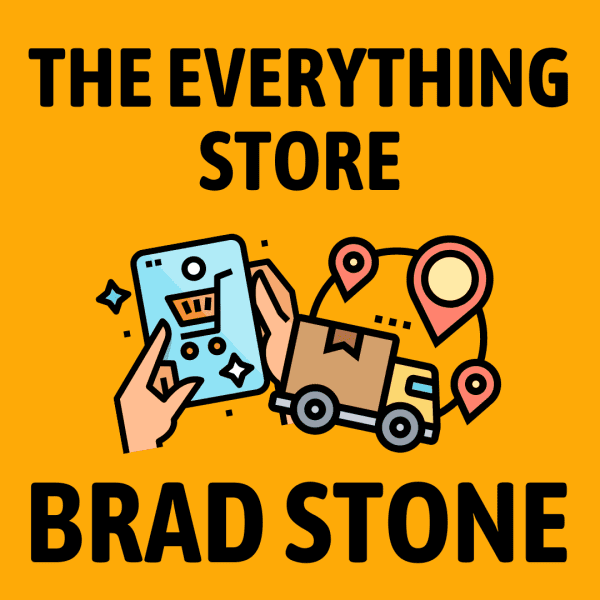
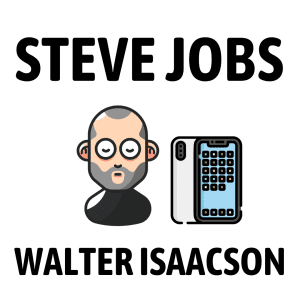
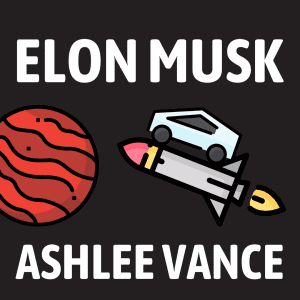
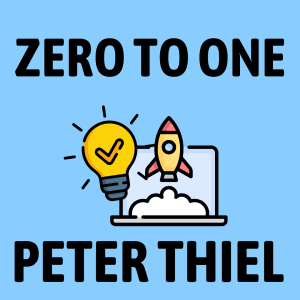
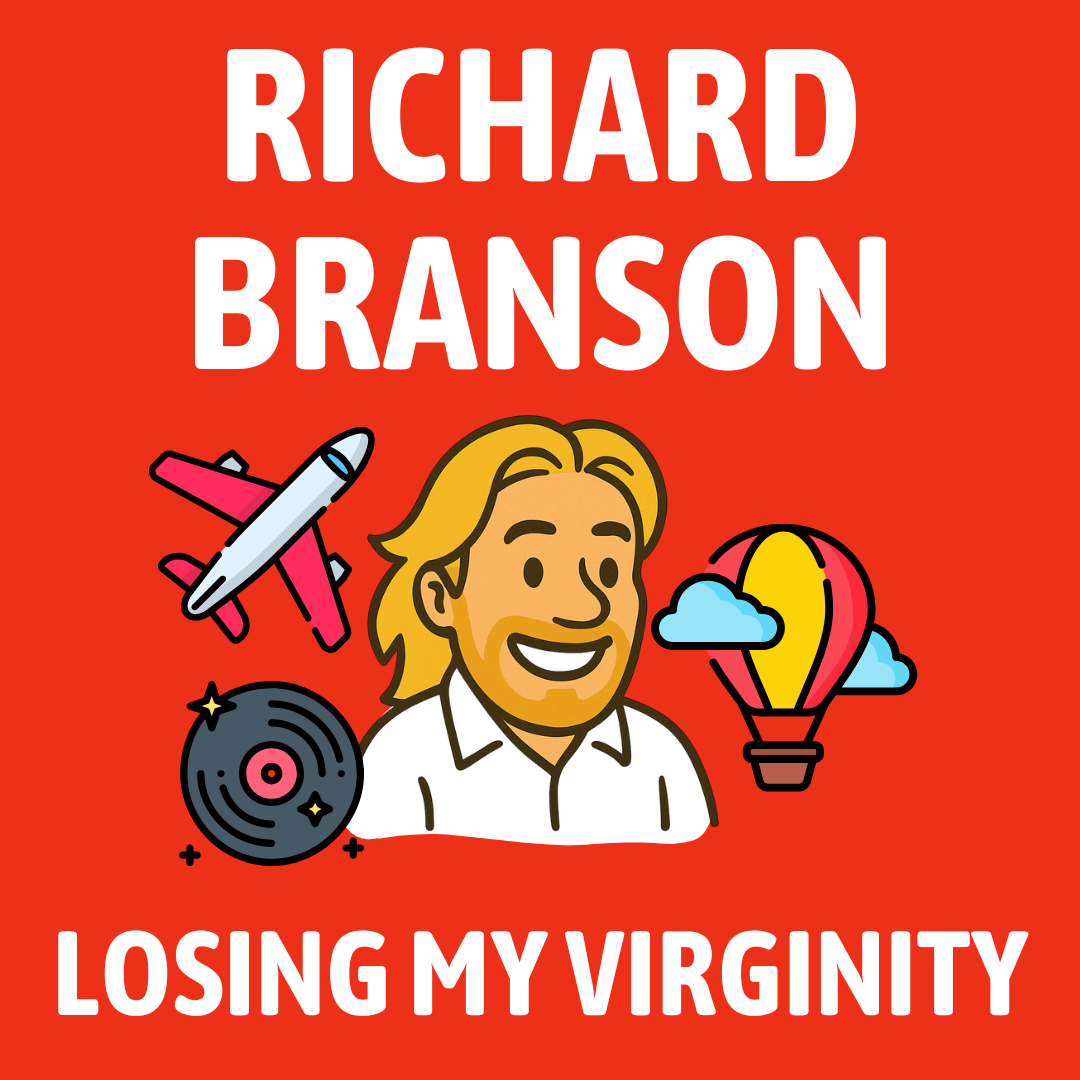
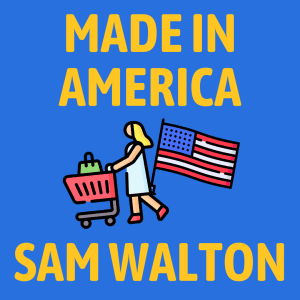

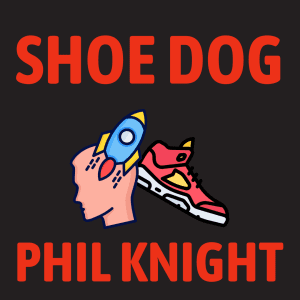
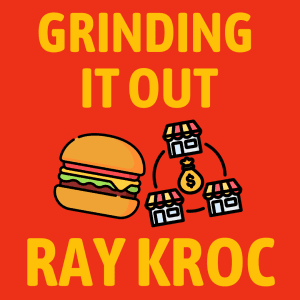

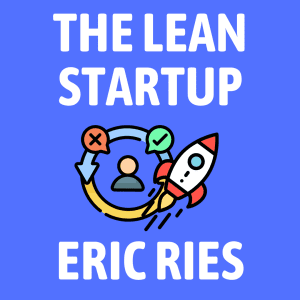

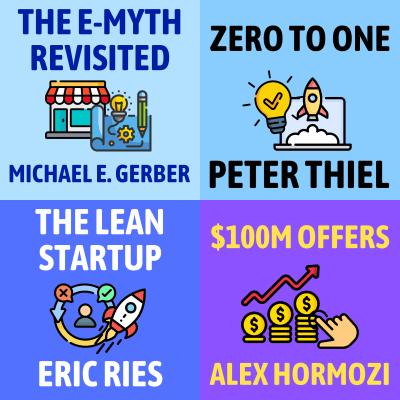
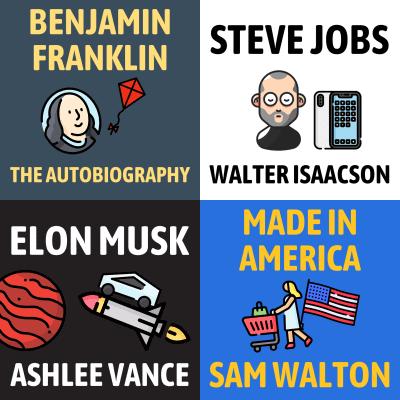
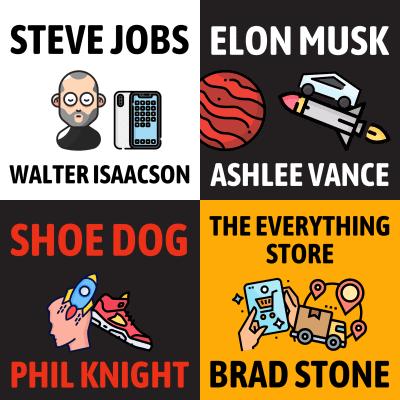
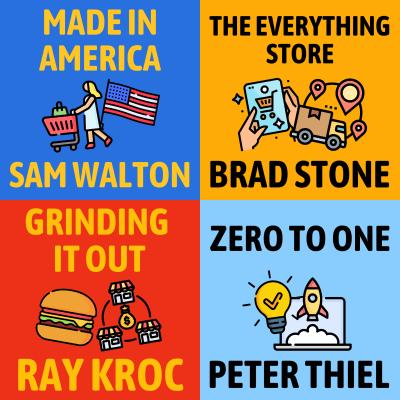















Community Notes